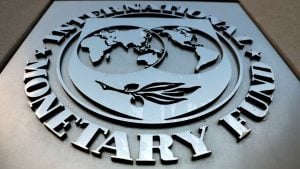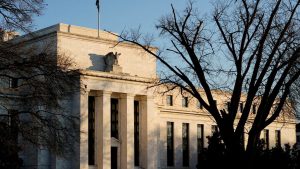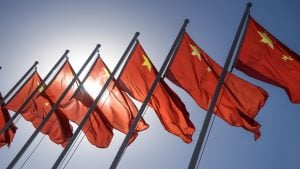Kerala High Court rules Malabar ‘Parota’ to be treated as bread at 5% GST
Summary
The Kerala High Court’s decision on ‘Malabar Parota’ contradicts the previous rulings of the Authority for Advance Ruling (AAR) and Appellate Authority for Advance Ruling (AAAR).
In another unique case stemming from GST classification challenges, the Kerala High Court ruled that Malabar ‘Parota’ is akin to ‘bread’ and should thus be categorised under Heading 1905 for taxation purposes. The decision contradicts the previous rulings of the Authority for Advance Ruling (AAR) and Appellate Authority for Advance Ruling (AAAR).
The Kerala High Court determined that both ‘Classic Malabar Parota’ and ‘Whole Wheat Malabar Parota’ products should be taxed at the GST rate of 5% rather than 18%, as they share similarities with items listed under HSN code 1905, such as bread.
The high court ruled that products “are eligible at the rate of 5% GST (2.5 % CGST + 2.5 % SGST) and not 18% as was being pleaded by the government, which was citing orders of the Advance Ruling Authority and the Advance Ruling Appellate Authority,” where the treatment was decided to be 18%.
The ruling was delivered by Justice Dinesh Kumar Singh at the Kerala High Court.
Advocates M. Gopikrishnan Nambiar, K John Mathai, Joson Manavalan, Kuryan Thomas, Paulose C Abraham, Raja Kannan, R Chethan Krishna and S Parvathi appeared on behalf of the assesee, whereas Advocate P G Jayashankar and Special Government Pleader (Taxes) Muhammed Rafiq were representing the government.
The assessee, Modern Food Enterprises Pvt. Ltd, is engaged in the manufacturing and supply of food products ‘Classic Malabar Parota’ and ‘Whole Wheat Malabar Parota’ (products). The assessee had sought clarity from the authority for advance ruling on classification, rate of GST, and whether the product can be treated as ‘bread’ under GST or not.
The assessee had filed a writ, which was allowed by the Kerala High Court via observations that according to Rule 4 of the General Rules of Interpretation of the Harmonized System (GRI), the goods that cannot be classified in accordance with Rules I to III shall be classified under the Heading appropriate to the goods to which they are akin. Thus, paving the way for the product to be treated under 5%.
The high court also elaborated on the explanatory notes to HSN sub-heading 1905, which provide that the most common ingredients of the products in this heading are cereal flours, leaves, and salt but they may also contain other ingredients that facilitate fermentation and improve characteristics and appearances of the products.
The Kerala High Court further noted that the products of this heading may also be obtained from dough based on the flour of any cereal, whereas Chapter Heading 21, particularly HSN 2106, prescribes food preparation not elsewhere specified or included and assessee products or not akin to any of the products which are mentioned in Chapter Heading 2106.
The court observed that the assessee’s products are to be included in Chapter Heading 1905 as the petitioner’s products are akin to the products mentioned in the said Chapter Heading 19 and will be eligible to be taxed at the rate of 5% GST and not 18%.
Meanwhile, experts say that the ruling will help several other cases that are under litigation and are similar in nature. However, the government continues to hold the view that the Kerala High Court decision is not fair and would need more clarity.
Sandeep Sehgal, Partner-Tax, AKM Global, a tax and consulting firm, states, “This decision highlights the importance of accurate classification in tax matters, ensuring fair treatment for businesses and consumers alike. The ruling marks a victory for the petitioner in this case, and serves as a precedent for similar disputes in the future.”
“The classification rule is that the specific entry will prevail over the general entry and hence from that perspective, this is a very welcome decision. This will not only help this sector but several other sectors based on the principles formulated by this court” said Abhishek A Rastogi, founder of Rastogi Chambers, who is arguing before different Courts on classification issues.
“The intent of the GST Council was always to keep the basic necessary supplies under a lesser category of rate and this decision tilts the balance in that flavour as well,” added Rastogi.
However, rate rationalisation remains the key, and the industry will closely watch how this is done in the months ahead, Rastogi said.
Yogesh Kale, Executive Director, Nangia Andersen India said, “The Karnataka AAR had also ruled in 2020 that Whole Wheat Parota and Malabar Parota were classifiable under HSN code 2106 (the AAR ruling was held to be void-ab-initio by the AAAR due to suppression of facts by the taxpayer). The Kerala High Court ruling puts an end to the controversy over classification of Malabar Parotas, highlighting time and again the need for accurate classification, importance of the Explanatory Notes to the headings and that in case of doubt, the products must be classified under the heading to which they are most akin. The principle would also serve as a guidance in classification of other products.”
ALSO READ | Explained: Here’s what you should know about GST evasion and DGGI

Elon Musk forms several ‘X Holdings’ companies to fund potential Twitter buyout
3 Mins Read
Thursday’s filing dispelled some doubts, though Musk still has work to do. He and his advisers will spend the coming days vetting potential investors for the equity portion of his offer, according to people familiar with the matter









 Listen to the Article
Listen to the Article  Daily Newsletter
Daily Newsletter














